Heather plants have fluffy stems that are evergreen with flowers that come in a variety of red, white, purple, pink, and lavender.
They make a superb contribution to your home front or gardens. This is due to the characteristics of evergreen and pattern flowers with a unique overlay that makes the plants stand out from a bunch of wild plants.
Heathers are bushy and evergreen wild plants. They belong to a family of heaths, and they are natives of Siberia, western Europe, and North America.
Scientifically, Heather plants are known as Calluna Vulgaris; they almost always make an important addition to your plant collection. However, Heather plants come in many variants, types, and looks. So, here's a list of the best types of heather plants you could have in your garden.
Table of Contents
Types of Heather Plants
Heather plants belong to the family Ericaceae, and they are perennial plants having evergreen foliage and flowering between April to August.
They grow from about 4-20 inches tall, and they come in many unique varieties that's slight differences in their genetic make-up. Here are some of the popular types everybody loves:
1. Bell Heather Plant (Erica cinerea)
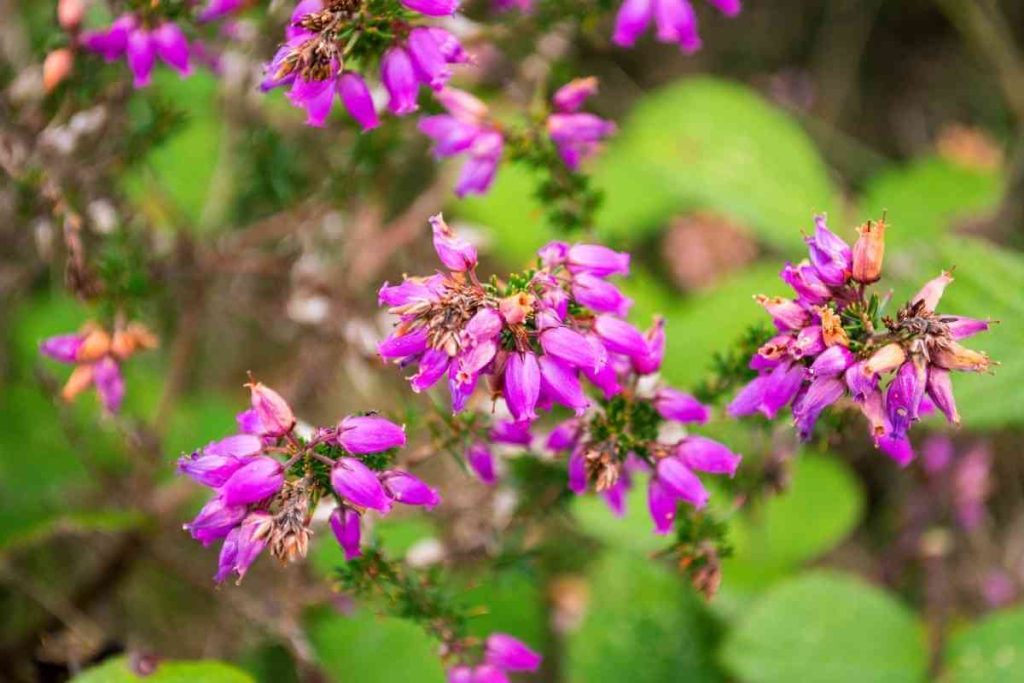
The Erica cinerea is a large but compact shrub. It has beautiful flowers which are a variety color mix of white, purple, pink and are well populated on the shrubs.
The Bell heather is a native of Central and West Europe. They belong to the family of Ericaceae, provide large amounts of nectar, and can grow in winter and fall.
They are drought-tolerant and mostly grown as ornamental plants due to their attractive multicolor flowering pattern. Bell Heathers grow best adapted to the sun and well-drained. Like any other Heather on our list, the Bell Heather dislikes alkaline soil.
2. Dark Beauty Heather Plant (Calluna vulgaris)
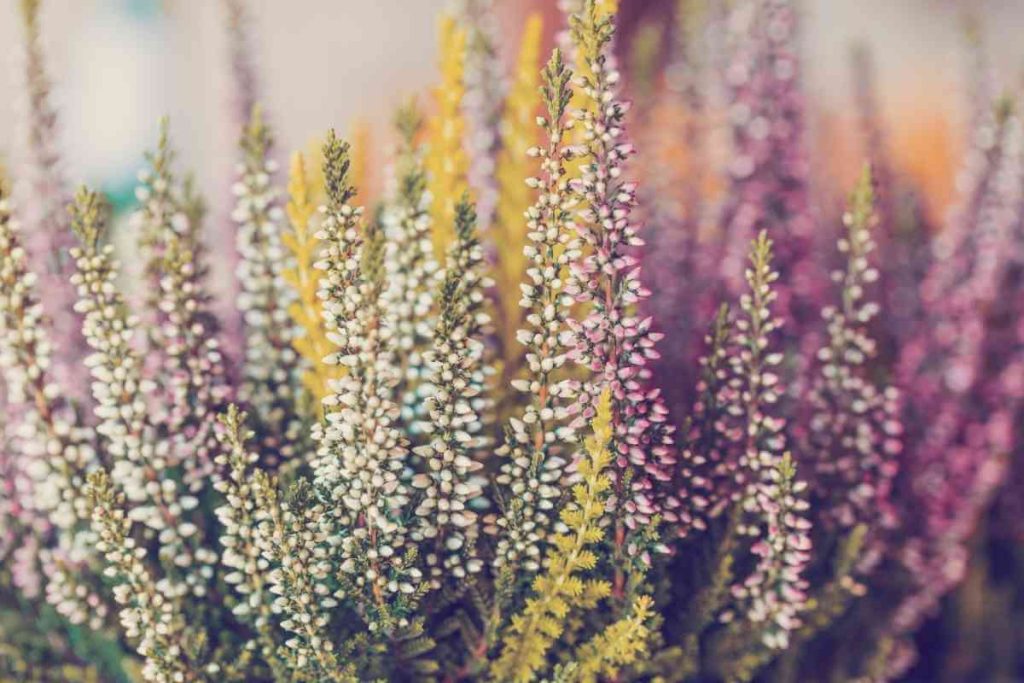
The Calluna Vulgaris is a recognized beauty. Although dark, the Calluna Vulgaris won an international award as a beautiful flower. The dark beauty has a deep ruby-red, dark cerise flower and is profuse. The plants grow up to 8 inches in length and 14 inches in width.
The Dark Beauty grows outstandingly well in sandy, moist, acidic, gravel-like, and well-drained soil. The plant loves sunlight. But you must be careful and ensure that the soil stays moist and never dries out. They are easy to grow and fit well in Rocky gardens and containers.
As beautiful as they come, it's good to know that the Dark Beauty grows all year round, both in winter and fall.
3. Eileen Porter Heather (Erica carnea)
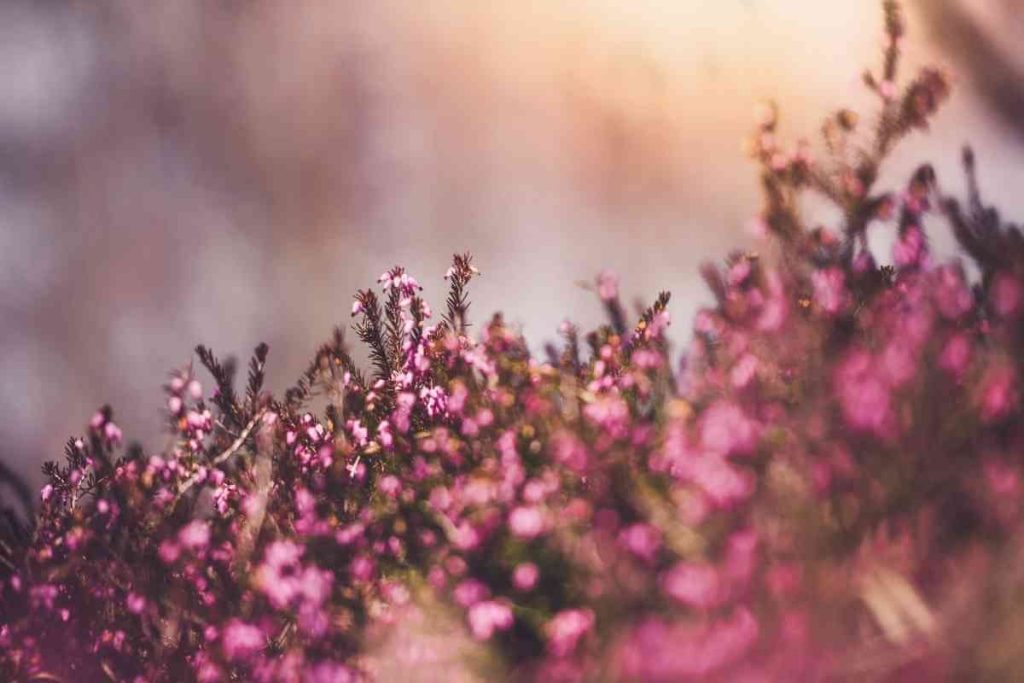
The Eileen Porter is a beautifully striking plant. It's one variant cultivar of the Erica Carnea, and it has flowers that bloom around October to April. It has a slow growth and leaves that are evergreen. It grows up to a length of 6 inches high and has carmine-colored flowers.
Like many other types of heather plants, Eileen porter likes acidic, well-aerated, and watered soil. The leaves of this plant are scale-like, and the flowers are a commendable addition to the beauty of Eileen Porter.
But the Eileen porter is unique from other Heather plants as it can tolerate slightly alkaline soils.
4. Firefly (Calluna vulgaris)
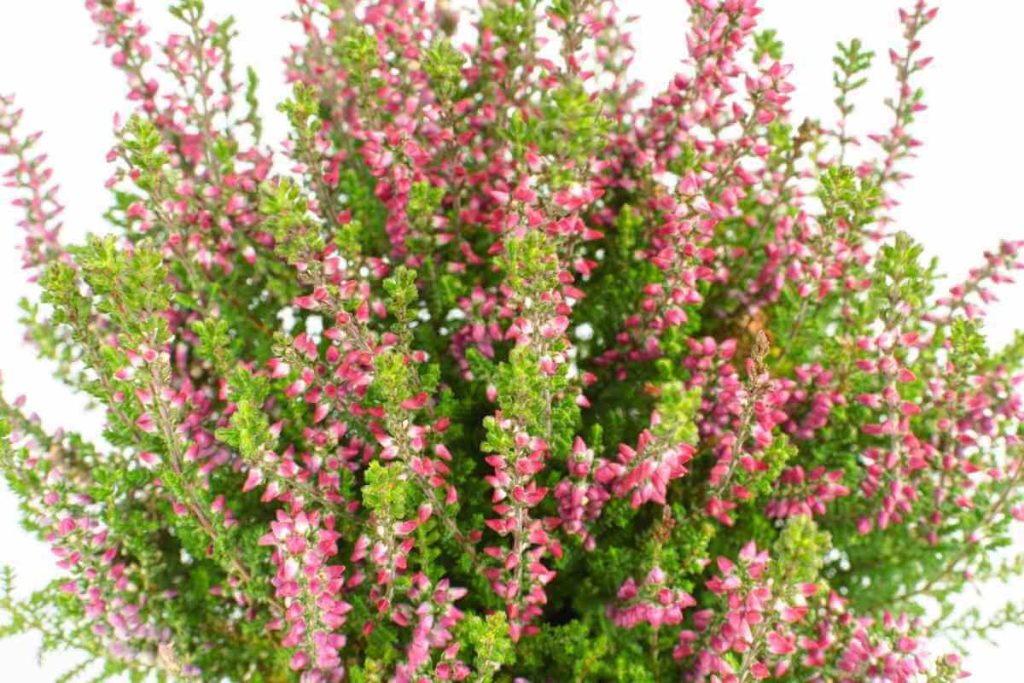
The firefly is a very colorful heather plant. It's also popularly known as the Scottish Heather.
The plant's foliage changes throughout the season. It exhibits brilliant colors like primrose, bright chartreuse, and it almost turns yellow in spring.
The firefly plant has deep-mauve petals,s and it's by far one of the brightest plants you'd come across in a group of heather plants. The firefly flower plants can grow up to 20 inches in length.
In winter, the firefly cultivar of Calluna Vulgaris turns brick red. Since its flowers are so beautiful, they can easily attract butterflies and hummingbirds.
5. Jana (Calluna vulgaris)
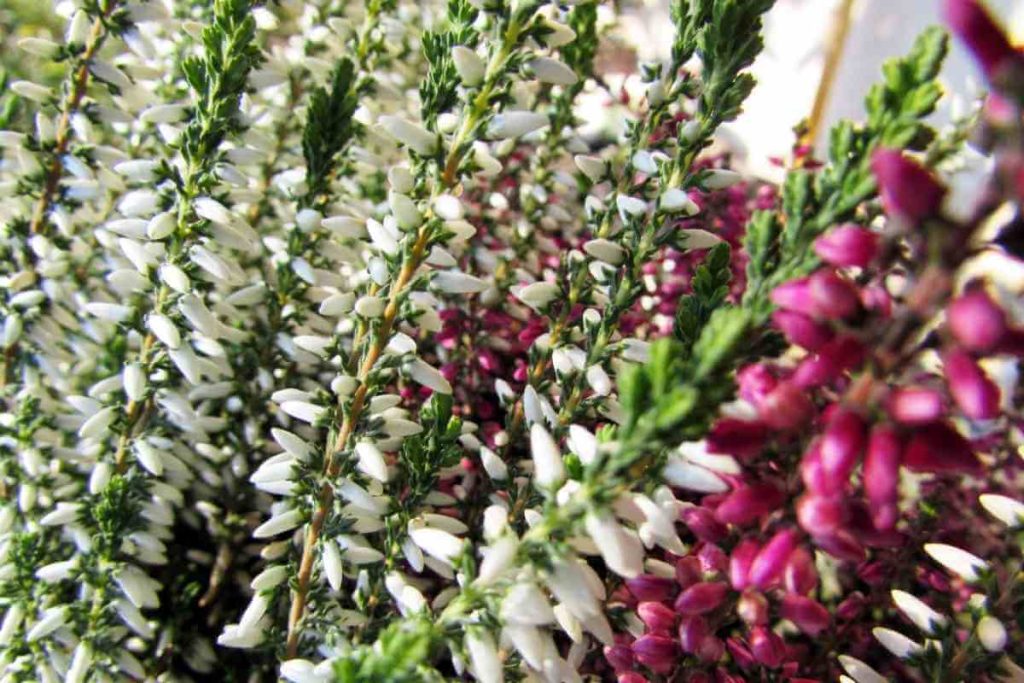
The Jana plant is another variant of the Calluna Vulgaris. It's beautiful and has a well-layered and colorful flower-like every other Heather plant. The flowers are dark pink, having light green foliage to compliment.
This variant of heather "Jana" has a unique growth requirement that depends on the season when you choose to plant them.
Planting in winter or spring means you'd have to opt for acidic soil or soil that is slightly alkaline. But for summer, your best bet would be lime-free acidic soil.
6. Pink Star (Erica tetralix)
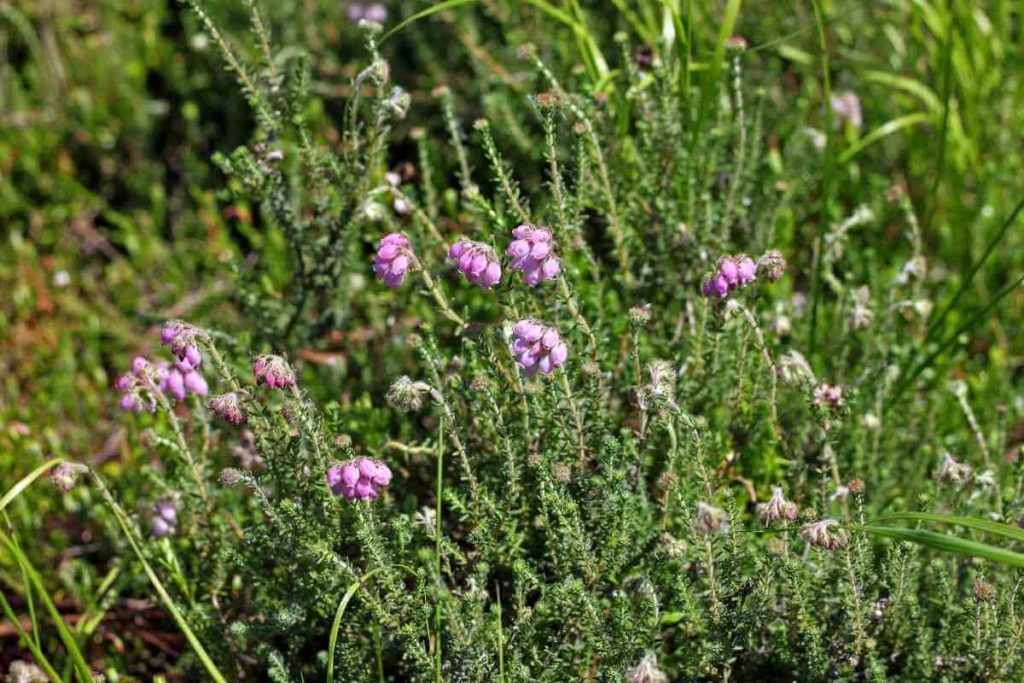
The pink stars are not just another random selection of Heather; they have a bell shape subtle and pink-colored flowers that bloom in late spring or early fall.
These flowers are very eye-catching, and they look like stars. In preference, this variant of Heather prefers well-drained and moist soil.
Soil PH should also be acidic and neutral. The plant should be kept in the open sun or shaded area for a fully blown flowering.
The Erica Tetralix can grow up to a 0.5-meter height within 5-10 years. The foliages of the Erica tetralix are evergreen and can either be erect or prostrate. The leaves have a unique needle-like shape that is whorl and racemes.
7. Irish Heath (Deboecia Cantabrica)
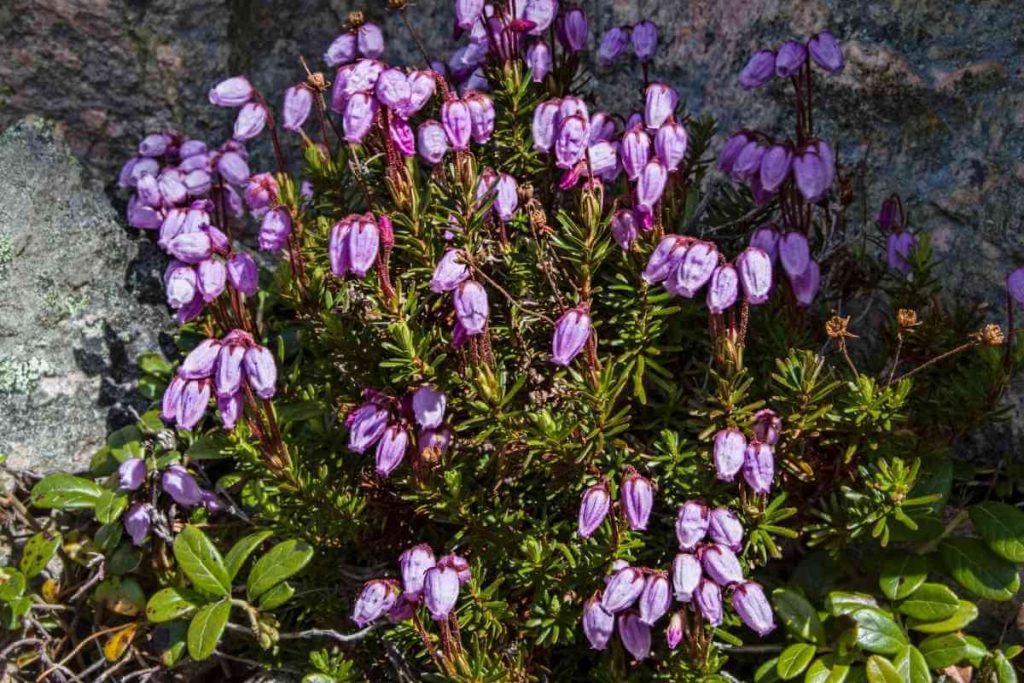
The Irish heath has a medium purplish color. It's a rare but beautiful example of a heather plant variant. It blooms around mid-summer, late summer, early fall, and mid-fall.
This plant's ideal soil PH type is acidic, ranging from mildly acidic to strongly acidic. The plants can be propagated by semi-hardwood cutting.
The plant develops and grows sterile seeds. This means that stem cutting can only propagate this type of heather plant. Plants cannot grow for the seed.
It has a spacing of 15-18 inches. The plant can grow up to a height of 60-90 cm. The Irish heath has evergreen foliage with an average watering need. The plant is easy to care for without complex watering or nutrient needs.
8. Winter Chocolate (Calluna Vulgaris)
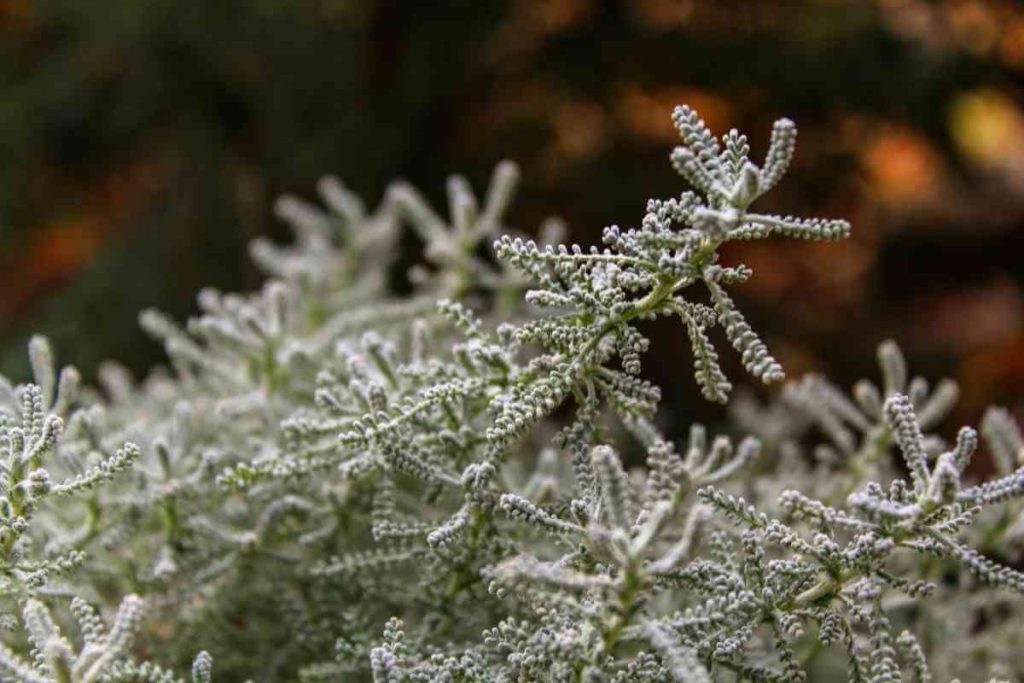
The winter chocolate is a delightful ornamental, and it fits perfectly well into many gardens. But, above all, it has the heartwarming winter chocolatey look. Chartreuse and golden hues are also some of the radiant alternatives of winter chocolate.
There are some color changes too, especially during the long day. The foliar shades overlap and rumps into a mix of pink, light green, yellow, and orange.
During late summer, you'd get a complimentary lavender look that feels so amazing. Winter Chocolate can grow up to 20 inches high and blossom around August and October.
9. Silver Knight (Calluna Vulgaris)

Regular callunas’ have tiny scale-like leaves with a broad color range. There are deepened green, silver, bronze, and gold-colored flowers. After frost, some of these flowers are bound to show some mild color change.
The flowering of the silver Knight starts from mid-summer to late summer, and the most common flower colors are pinks, whites, and purples.
These flowers are bell-shaped and frozen with repose one-sided spikes. Heathers plants are great picks for almost any ornamental garden. They are fresh or dried.
Calluna Vulgar loves sunlight a lot but can sometimes work with shades.
Frequently Asked Questions
What kind of Heather are there?
Technically, Heathers has 3 genera: Genus Calluna, genus Erica, and genus Daboecia. Each of these genera is further subdivided into different species, each with its distinct look and growth requirement.
How many species of Heather are there?
Genus Calluna has more than 400 species. Genus Erica has over 800 known species, while the genus Deboecia has only 2 known species.
What is the difference between heath and Heather?
The heath only refers to species within the genus Erica, while Heather refers to species within the genus heather. Many people confuse heath for Heather and vice versa. Both plant types are a good addition to your garden due to their ability to change color all year round.
They share some similarities making it difficult to differentiate between both types of plants. But, separating the deaths and Heather by their genera makes it all too easy.
Does Heather survive winter?
Heathers come from different species. Some of these species have a unique growth requirement. Species like the Erica carnea would flourish during winter because they are better adaptable to the cold winter air. Having another temperature-loving variant of the heather plant during winter would be a total disaster as the chance of survival would be slim.
What time of the year does heather flowers?
Heather plants flowers when the conditions are favorable. In most cases, this happens between mid-September to early November. Their flowers come out colorful and filled with nectar that attracts bees. If you are allergic, find a suitable bee control method to protect yourself.




